Créme de la créme! County Sligo is the new culinary capital of Ireland’s Northwest - and deservedly so, writes Domhnall O’Donoghue.
County Sligo - one of Ireland’s most beautiful destinations located along the Atlantic Ocean - is currently cooking up a storm. Not content with being the home of world-class beaches and Nobel-prize-winning poets, this unspoiled county is emerging as the culinary capital of Ireland’s Northwest.
This reputation is primarily thanks to the Sligo Food Trail, one of the fastest-growing food networks in Europe. It recently celebrated its fifth birthday - a fantastic milestone for a community-driven initiative.
The pandemic has undoubtedly been a challenging period for the food and drinks industry globally - and Ireland was no exception. However, over the past 16 months, members of the Sligo Food Trail have remained connected with food-lovers by embracing online tastings, demonstrations and other interactive events.
Now, with restrictions finally easing across the Emerald Isle, Sligo is ready to welcome foodies in person once again. Weekend markets are also scheduled - a fantastic way to meet producers and learn more about the local produce. Wanting to do just that, my taste buds and I venture to Sligo - a three-hour train journey from Dublin.
King of the castle
My first destination is Markree Castle - a magnificent, 17th-Century property nestled within the verdant Collooney countryside. When it was constructed in 1663, the property was a humble fort guarding a ford on the Unshin river; today, it is one of the country’s largest privately-owned castles - and most popular wedding venues.
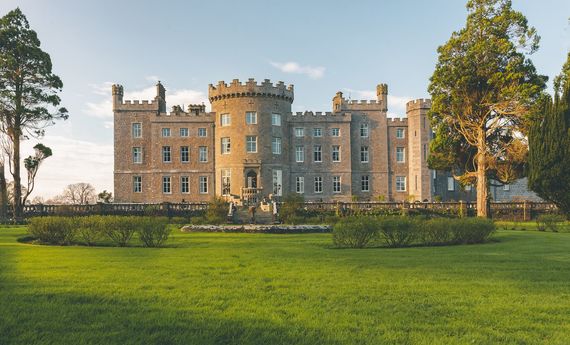
Markree Castle.
Nicholas Ryan, who, along with his wife, Deirdre, manages the castle, shows me around the property. Following my first step onto the dramatic, candle-lined staircase, I feel like I’m disappearing into a fairytale.
At the beginning of the 19th century, famed architect Francis Johnson - whose work includes Dublin’s GPO - was employed to extend, improve, and enlarge the castle. In 2015, after being acquired by the renowned hotelier family, the Corscaddens, this Gothic masterpiece received another extensive refurbishment - the exceptional craftsmanship of these efforts is evident in every flourish.
With roaring fires, stained glass windows and an abundance of period furnishings, Markree Castle transports you back in time while also managing to feel fresh and contemporary.
Joining us along the tour of the grounds is Róisín - a gregarious three-year-old Irish wolfhound. Clearly enamored with her home and eager to show it off, my new, four-legged friend’s welcoming personality perfectly mirrors the céad míle fáílte I also receive from the castle’s exceptional staff.
Read more
For lunch, I indulge in a delectable six-course, seasonal taster menu created by the deftly inventive head chef, Lee Mastin, that includes tuna croquettes, lamb’s liver, scotch duck egg and tamarind glazed pork belly. Nicholas reveals that the kitchen sources most of its ingredients in Sligo and neighboring counties. This freshness is evident in every mouthful.
“Markree Castle is a wonderful place to work,” Nicholas says. “I love seeing the reactions on the faces of our guests - we want to give them that wow factor.”
Following my experiences here today, my host - ably supported by his furry colleague, Róisín - has certainly achieved that.
The world is your oyster
“Eating an oyster is like kissing the sea on the lips.' So said the late French poet Leon Paul Fargue - a description I soon discover to be wonderfully precise.
The recently launched Sligo Oyster Experience Farm Tour is spearheaded by the effervescent and visionary entrepreneur Aisling Kelly - a business and tourism graduate from Sligo IT. The hour-long tour takes place at Coney Island Oyster Farm in Strandhill, a country mile outside Sligo town.
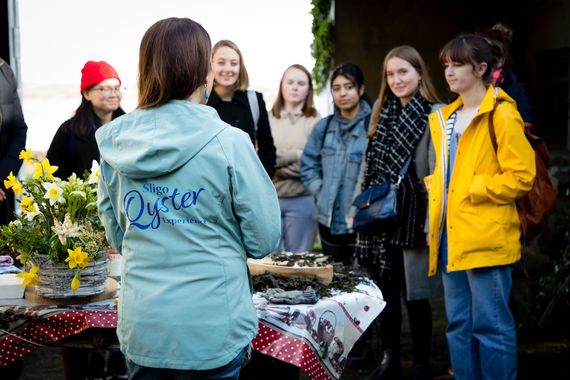
Sligo Oyster Experience Farm Tour.
Aisling, whose husband, Glenn Hunter, is an oyster farmer, proudly reveals that Sligo is the home of the oyster, explaining that the Gaelic word for Sligo - ‘Sligeach’ - translates as ‘abounding in shells’.
Seeing as oysters are often associated with high-end restaurants, Aisling - who also owns WB Coffee House in the town - is determined to make the delicacy accessible to everyone.
“I want everyone to experience their magic,” Aisling mentions, as Glenn demonstrates the harvesting process, along with ‘shucking’, the term given to opening the shells.

Are you planning a vacation in Ireland? Looking for advice or want to share some great memories? Join our Irish travel Facebook group.
As Aisling lists the benefits of oysters - “they’re full of zinc, iron, minerals and selenium” - I marvel at the stunning coastline around me. Although I wonder if my love for the vista is the oysters talking - after all, they’re known for being an aphrodisiac. Casanova, the notorious lothario, apparently swore by them, devouring fifty a day!
With or without this sudden arousal, I can wholeheartedly recommend the Sligo Oyster Experience, which incorporates a local seaweed blend from Dr Prannie Phatigan of Irish Seaweed Kitchen and craft beer from James Ward in Lough Gill Brewery.
Hooked up
Later that day, I meet Anthony Gray, a central player in the county’s ever-growing culinary scene. Once a professional golf player, today, the restauranteur is constantly teeing up opportunities to promote local businesses, suppliers and producers.
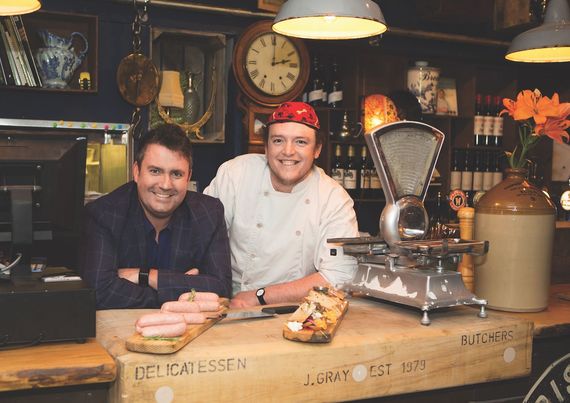
Anthony Gray and Chef Joe McGlynn from Hooked, in Sligo.
“In Sligo, we’ve some of the finest restaurants in Ireland,” he enthuses. “We provide a rugged, authentic experience. I feel blessed being able to showcase Sligo through local food.”
In addition to being the past president of the Restaurant Association of Ireland, as well as former chairman of the Sligo Food Trail, Anthony is the proud owner of a duo of award-winning restaurants located along Rockwood Parade - a bustling stretch that he refers to as ‘the Temple Bar of Sligo’.
Eala Bhán, the Gaelic for white swan, is a high-end eatery, favored by Ireland’s president, Michael D Higgins, and the late Nobel-prize-winning poet, Séamus Heaney. On the other hand, Hooked is an edgier, cooler option with an interior to make Instagrammers swoon.
When it comes to choosing his suppliers for these two restaurants, Anthony says that he is happy to pay that little bit extra to “support local businesses and suppliers, which, in turn, generates local jobs.”
Read more
A top-glass hotel
My accommodation for the night is the Glasshouse Hotel which dramatically towers over the lively Garravogue River. With its unique glass design and colorful decor, this four-star establishment has been inundated with awards - for a good reason.
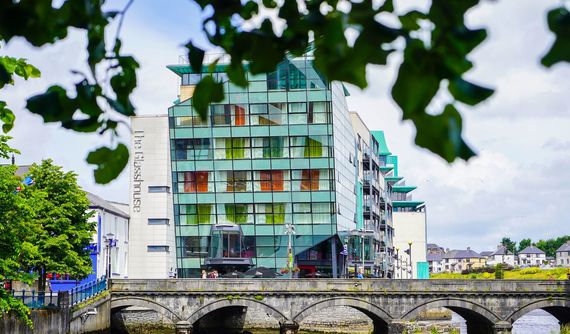
Glasshouse Hotel, Sligo.
The hotel’s executive chef, Alan Fitzmaurice, hails from Castlerea, Co. Roscommon and credits his parents for his love of food.
Speaking of his mother, he says: “My memories are of home-baked bread, hearty puddings and casseroles, slow-cooked to perfection in the Aga, ready for hungry children after school!”
Alan and his siblings fished, hunted and foraged with their father: “I remember rushing into the back kitchen one day and swinging the door shut, only to be clocked on the head by a hanging pheasant!”
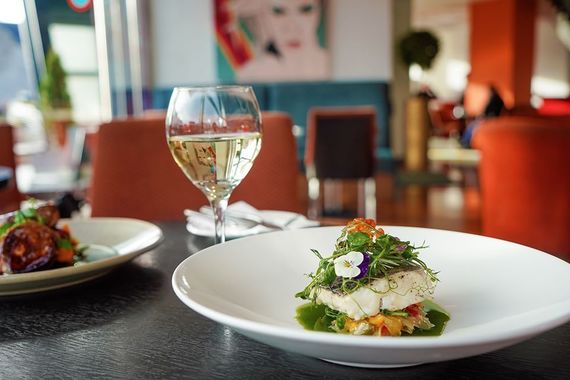
Dining out at Glasshouse Restaurant, Sligo.
My meal here tonight is the steak, and like Alan and that boisterous pheasant, it’s a knock-out.
Sweet as pie
The next morning, I visit Sweet Beat - the family-run, plant-based eco café and shop located in Sligo town. Overseen by Carolanne Rushe, this colorful eatery has received a slew of prestigious awards while its reputation for inventive and creative dishes grows daily.
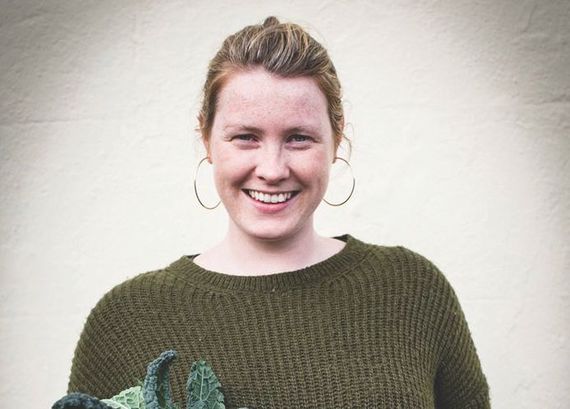
Carolanne Rushe from Sweet Beat.
Originally from Dublin, Carolanne’s family moved to Sligo when she was just eight, prompted by her father’s job - a cameraman with our national broadcaster, RTÉ. Living in Strandhill alongside sandy beaches kick-started her life-long love of nature.
Sweet Beat welcomes an eclectic mixture of customers eager to try something new or enjoy a treat. When I sample some of these treats - a selection of sourdough, and vegan doughnuts - I’m instantly won over.
Carolanne says: “The café has been a revelation for many committed meat-eaters. Not judgy or preachy – just food that’s good for you.”
Change of pace
Thanks to Guinness, stout is often the first drink that springs to mind when people think of Ireland. However, we are equally proud of our rich whiskey heritage. As it happens, the word whiskey derives from the Gaelic term uisce beatha - ‘water of life’ - and the Irish variety is said to predate its Scottish counterpart by some 90 years.
And now there’s a new Irish distillery making waves - not just on account of its lakeshore location. Brian Raethorne, the co-owner and commercial director of Lough Gill Distillery, tells me that their single-malt whiskey, Athrú, is enjoying massive success in countries like Germany and China. The name - pronounced Ah-roo - is the Gaelic word for change and reflects the tipple’s ever-changing nature.
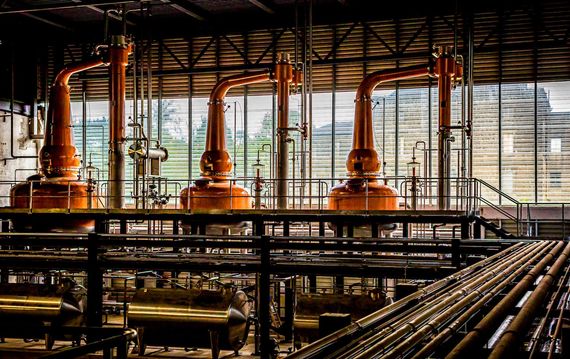
Lough Gill Distillery.
Hidden within Hazlewood Demense on the Lough Gill Penninsula, the distillery utilises many of the resources found on its doorsteps, including water from Benbulben mountain via an on-site well. The Italian company, Frilli, makes their copper pot stills.
Opposite the distillery is Hazlewood House, a Palladian-style property designed by Richard Cassells in the 18th Century. The German architect is noted for designing Powerscourt House, Leinster House and the Rotunda Hospital. As a tribute to the property, Athrú’s branding uses the same colour blue on the house ceilings.
The house is currently in the process of an ambitious restoration. Brian acknowledges that it’s a “massive undertaking” but is determined to return Hazelwood House to its former glory.
“I’d love Lough Gill Distillery and the house to become a signature destination for tourists - we want to develop tours, museums, tastings, boat cruises and a bar,” he says. “It has huge potential.”
Before I leave, I sample some of Athrú whiskey - after my first sip, I instantly understand what all the fuss is about!
By the sea
Unable to resist the lure of the wild Atlantic Ocean - and desperately needing to walk off that potent whiskey - I head to the charming fishing village, Mullaghmore. En route, I pass St Columba’s church in Drumcliffe, where one of Ireland’s most beloved poets, Nobel-winner W.B. Yeats, is buried.
Stretching my legs along Mullaghmore’s golden beach, it’s easy to understand why the county’s landscape has inspired poets and writers such as Yeats. Having worked up an appetite, I visit the award-winning Eithna’s By the Sea for lunch.
“We cater for casual dining with homemade recipes, using locally sourced food and sustainable produce,” owner Eithna O’Sullivan says of the 16-year-old restaurant, famed for its fresh seafood, shellfish and lobster dishes. Eithna also enjoys a reputation for her inventive use of seaweed in both savory and sweet dishes.
Eithna O’Sullivan from Eithna By The Sea.
She mentions that the restaurant opens “with the season - when the fishing boats are heading out, and the first of the local vegetables are peeping their heads above the soil.”
I devour one of their most popular options - the lobster, brioche roll - so good, I almost do like Oliver Twist and ask for more!
Loosening my belt, I eventually return to Dublin, aware that there are other top-notch establishments yet to visit in County Sligo, including Coopershill House - a stunning countryside property, which has been in the O’Hara family since it was built in 1774. I believe Simon O’Hara is the seventh generation to call Coopershill home, while his wife, Christina, is an accomplished chef, born and raised in Strandhill.
Not to worry - I’ll just have to return to the culinary capital of the Northwest for a second helping soon.

Are you planning a vacation in Ireland? Looking for advice or want to share some great memories? Join our Irish travel Facebook group.
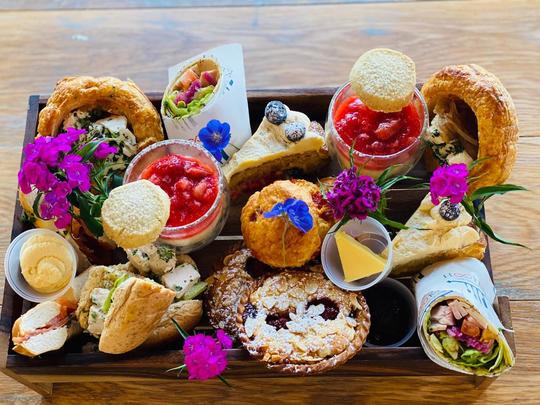



Comments